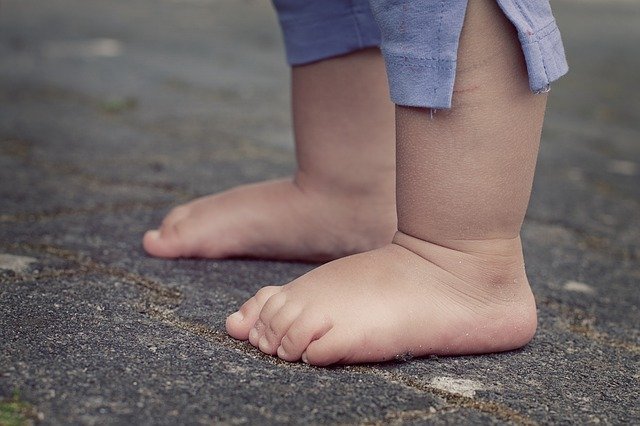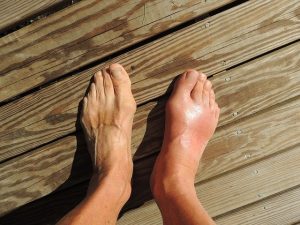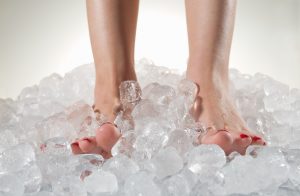Parents are often concerned about their offspring’s teeth and eyes but the developing feet are often forgotten. Although children’s feet usually encounter fewer problems than adult feet due to their flexibility and the resilience of the tissue, never the less they can be subject to some specific problems and many of the problems also seen in adult feet.
Firstly feet and children’s feet in particular are a remarkable piece of engineering. The foot is made up of 26 bones (28 if you include the Seasomoids, two small bones like sesame seeds in the tendons of the big toe) which when we are born are really cartilaginous molds of the bones. This means they are made of cartilage (that rubbery stuff on the end of chicken legs) with small centers of ossificication. As we mature the bones gradually ossify to become hard bone. Complete ossification doesn’t occur until we are in our late teens and even early twenties. So plenty of opportunities to damage this structure before it is fully formed. This is why good fitting shoes are so important. Children are prone to sudden growth spurts and it is important to check how the shoes fit at least every three months. There should be the width of the little finger’s space between the longest toe and the end of the shoe.
Verrucas are very common in children. These sometimes painful lesions are basically a wart on the foot and treatment may involve freezing the verruca or using an acid to get rid of them. Also commonly seen in children particularly in early teens are ingrown toe nails. Ingrown toenails are very common in this adolescent period when the feet are often a bit sweaty due to hormonal changes, making it easy for the nail to penetrate the skin. Sometimes it is simply a question of cutting out the bit that’s sticking in and advising about nail cutting but if the problem persists surgical removal of part of the nail under local anesthetic may be required. Fungal infections are very common in children and teenagers due to those damp feet again. Once diagnosed are relatively easy to treat with the appropriate antifungal medication.
Developmental problems in children’s feet include in toeing and flat feet both of which can be treated with orthotics and foot ware adjustments or occasionally casting.
Then there are some conditions which only happen in children. Avascular necrosis sometimes known as oseteochondrosis is a condition specific to children. There are four conditions here that all involve inflammation and necrosis at the growth plate of the bone. This results in pain which is exacerbated by weight bearing exercise, particularly running and jumping. The child will limp when running and experience pain especially during sporting activities. The area will be tender to touch and there may or may not be swelling there. Sever’s disease affects the heel, most commonly seen in children between eight and fifteen years. Kohler’s disease affects the navicular (top of the arch) and is generally seen between the ages of three and nine. Freiberg’s disease is found in the metatarsals usually the second and usually between the ages of thirteen and fifteen. Finally Osgood Schlatters disease, this actually affects the knee rather than the foot and is seen in children between the ages of eight and fifteen. Treatment for all of these conditions involves stopping all sporting activity provision of orthotics to support the foot. Laser treatment often speeds the process getting children back to normal activity more quickly.
It is worth remembering that there is no such thing as “growing pain” feet and legs especially in children should not be painful and pain requires the correct diagnosis.









